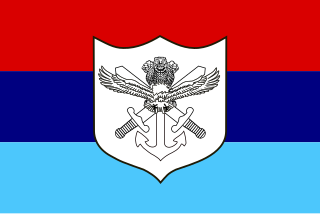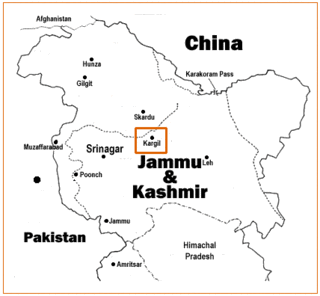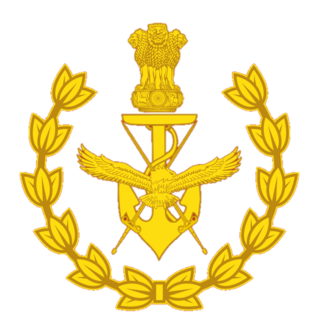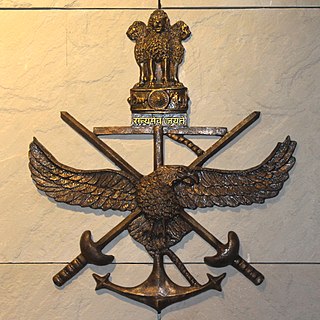
The Indonesian National Armed Forces are the military forces of the Republic of Indonesia. It consists of the Army (TNI-AD), Navy (TNI-AL), and Air Force (TNI-AU). The President of Indonesia is the commander-in-chief of the Armed Forces. As of 2023, it comprises approximately 400,000 military personnel including the Indonesian Marine Corps, which is a branch of the Navy.

India has several Special Forces (SF) units, with the branches of the Indian Armed Forces having their own separate special forces units. The Indian Army has the Para SF, the Indian Navy has the MARCOS, and the Indian Air Force has the Garud Commando Force. There are other special forces which are not controlled by the military, but operate under civilian organisations, such as the National Security Guard under Home Ministry and Special Group under RAW. Small groups from the military SF units are deputed in the Armed Forces Special Operations Division, a unified command and control structure.
The Strategic Forces Command (SFC), sometimes called Strategic Nuclear Command, forms part of India's Nuclear Command Authority (NCA). It is responsible for the management and administration of the country's tactical and strategic nuclear weapons stockpile. It was created on 4 January 2003 by the Vajpayee Government. Air Marshal Teja Mohan Asthana became its first commander-in-chief.
The Nuclear Command Authority (NCA) of India is the authority responsible for command, control and operational decisions regarding India's nuclear weapons programme. It comprises a Political Council headed by the Prime Minister of India and an Executive Council headed by the National Security Advisor.

The Indian Armed Forces are the military forces of the Republic of India. It consists of three professional uniformed services: the Indian Army, Indian Navy, and Indian Air Force. Additionally, the Indian Armed Forces are supported by the Central Armed Police Forces, Indian Coast Guard and Special Frontier Force and various inter-service commands and institutions such as the Strategic Forces Command, the Andaman and Nicobar Command and the Integrated Defence Staff. The President of India is the Supreme Commander of the Indian Armed Forces but the executive authority and responsibility for national security is vested in the Prime Minister of India and their chosen Cabinet Ministers. The Indian Armed Forces are under the management of the Ministry of Defence of the Government of India. With strength of over 1.4 million active personnel, it is the world's second-largest military force and has the world's largest volunteer army. It also has the third-largest defence budget in the world. The Global Firepower Index report lists it as the fourth most-powerful military.
A cyber force is a military branch of a nation's armed forces that conducts military operations in cyberspace and cyberwarfare. The world's first independent cyber force was the People's Liberation Army Strategic Support Force, which was established in 2015 and also serves as China's space force. As of 2022, the world's only independent cyber forces are the PLA Strategic Support Force, the German Cyber and Information Domain Service, Norwegian Cyber Defence Force, and the Singapore Digital and Intelligence Service.
The Andaman and Nicobar Command (ANC) is a integrated tri-services command of the Indian Armed Forces, based at Port Blair in the Andaman and Nicobar Islands, a Union Territory of India. It was created in 2001 to safeguard India's strategic interests in Southeast Asia and the Strait of Malacca by increasing rapid deployment of military assets in the region. It provides logistical and administrative support to naval ships which are sent on deployment to East Asia and the Pacific Ocean.

The Defence Intelligence Agency (DIA) is an intelligence agency responsible for providing and coordinating defence and military intelligence to the Indian Armed Forces.

INS Vajrabahu is an Indian Navy submarine base of the Western Naval Command located near Mumbai in Maharashtra. It was commissioned on 1 February 1996.

INS Jarawa is a naval base of the Indian Armed Forces under the joint-services Andaman and Nicobar Command located in Port Blair in the Andaman & Nicobar Islands. It was commissioned in 1964.
INS Kardip is a forward operating base of the Indian Navy under the joint-services Andaman and Nicobar Command located on Kamorta Island in the Andaman and Nicobar Islands. It was commissioned in 1973.
INS Trata is a missile battery base of the Indian Navy at Mumbai, Maharashtra tasked with the coastal defense of Maharashtra and Gujarat.

In the Indian Armed Forces women are allowed to join in combat service support branches and in non combatant roles only and they can only become officers except the Corps of Military Police of the Indian Army where women can become sepoys too. The Indian Air Force's officer corps had 13.09% women in 2018 and 8.50% in women 2014; the Indian Navy's officer corps had 6% women in 2018 and 3% women in 2014 and the Indian Army's officer corps had 3.80% women in 2018 and 3% women in 2014. In 2020, three officers had the rank of lieutenant-general or equivalent, all in the Medical Services. In May 2021, 83 women were inducted as sepoys for the first time in the Indian Army, in the Corps of Military Police.
The Defence Planning Committee is a senior decision-making organisation created on 19 April 2018 by the Government of India.

The Integrated Defence Staff (IDS) is an organisation responsible for fostering coordination and enabling prioritisation across the different branches of the Indian Armed Forces. It is composed of representatives from the Indian Army, Indian Navy, Indian Air Force, Ministry of External Affairs, Defence Research and Development Organisation, Ministry of Defence and Ministry of Finance. The IDS is headed by Chief of Integrated Defence Staff along with Deputy Chiefs of Integrated Defence Staff. On December 24, 2019, the Cabinet Committee on Security (CCS) established the post of Chief of Defence Staff, a four-star general, a tri-service Chief, that shall lead the defence forces as well as play the role of head of the Department of Military Affairs. The body advises and assists the Chief of Defence Staff.

The Kargil Review Committee (KRC) was set up by the Government of India on 29 July 1999, three days after the end of the Kargil War. The committee was set up "to examine the sequence of events and make recommendations for the future".

The Chief of Defence Staff (CDS) is the principal military authority and senior-most appointment of the Indian Armed Forces. Deemed the overall professional head of India’s three armed services, namely, the Indian Army, the Indian Navy and the Indian Air Force, the CDS is the highest-ranking military officer in service, responsible for overseeing inter-service jointness across all disciplines related to military functioning. Primarily, the office operates on a status of primus inter pares i.e., first among equals with the chiefs of the three services, and functions as the Permanent-Chairman of the Chiefs of Staff Committee (COSC) – the inter-service syndicate responsible for ensuring the establishment-cum-preservation of military integration.

The Armed Forces Special Operations Division (AFSOD) is an integrated tri-services division of the Indian Armed Forces. The division is tasked to carry out special operations. The AFSOD draws personnel from all three special warfare branches of the Armed Forces.
The Defence Space Agency (DSA) is an integrated tri-services agency of the Indian Armed Forces. Headquartered in Bengaluru, Karnataka, India. The agency is tasked with operating the space-warfare and Satellite Intelligence assets of India. The DSA draws personnel from all three branches of the Armed Forces.

Integrated Theatre Commands of the Indian Armed Forces are varying degrees of synergy and cross–service cooperation between the military wings of the Indian Armed Forces. Following Independence, in 1949 a joint educational framework was set up starting with the first tri-service academy in the world, the National Defence Academy, and over the years this joint educational framework has been expanded to bring officers from the different services together at different stages of their careers.











